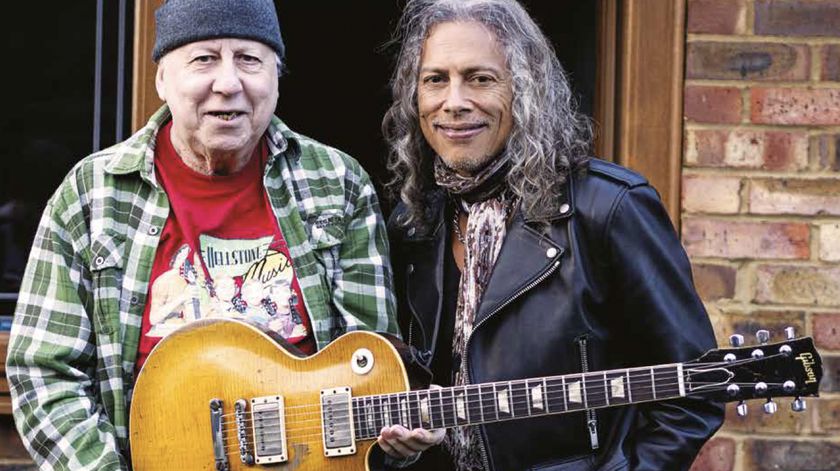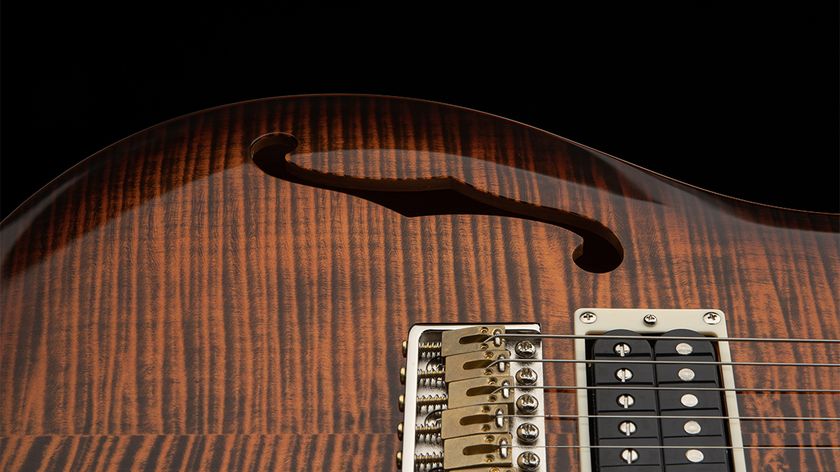GuitarPlayer Verdict
Beautifully engineered and easy to install these replacement parts deliver exactly the results most players are seeking
Pros
- +
Extremely well-engineered and high-quality parts that do exactly what most guitarists will want from them
Cons
- -
None, although the JAM Offset bridge does not rock, if you prefer that setup
You can trust Guitar Player.
For about five decades, the original Fender Jazzmaster and Jaguar suffered a distinct lack of alternatives for their bridges, the components that many players consider the weak links in their sonic chains. But functional replacements have roared forth in the past several years, the latest of which comes from German maker Kiss My Strings (KMS).
Their JAM Advanced Offset Bridge partners a unique saddle design with a sturdy approach to mounting, making it a viable alternative to anything on the market.
What’s more, the company has applied a similar approach to a range of compensated Telecaster saddles, for an impressive solution in a field that’s far more crowded. On first blush, the results are encouraging. KMS boasts cutting-edge CNC machining and advanced plating and coating technologies to form high-quality materials.

JAM ADVANCED OFFSET BRIDGE
The original bridge Fender partnered with the Jazzmaster’s and Jaguar’s floating vibrato system is designed to rock with gentle whammy action, ideally returning to an accurate zero point. Set up just right, and usually using heavy-gauge strings, they often work fine, though rarely perfectly. Tonally, they can be a sustain-squelching rattletrap.
Part of KMS’s solution is to supply custom “thimbles” and chunky bridge posts that fit into them precisely, eliminating the rocking action entirely. These are partnered with sturdy, intonated saddles cut with “V” slots that hold the strings securely, and made from solid brass that’s plated to let the strings slide through the groove and return to pitch more easily. The approach promises not only improved tuning stability but also increased resonance and sustain.
I tested the JAM bridge on my all-original 1963 Fender Jaguar and found it easy to install and set up after a little guidance from online tech forums about removing the guitar’s original thimbles. The set includes three hexagonal wrenches for installation and adjustment, as well as spare grub screws and intonation screws. (I also removed the Jag’s mute in the process, which I never use, but the JAM bridge installation doesn’t require that.)

Once installed, the new bridge sat rock-solid in the replacement thimbles, and with the guitar restrung the precision saddle slots held my .010-.046-gauge strings firmly in place.
Intonating the JAM bridge involves a process much like that used for compensated vintage-style Telecaster saddles, with strings sitting in pairs on a shared saddle. In theory, this always implies a compromise between the strings of each pair. In practice, however, I was able to dial in each individual string precisely, and tuning was great all up and down the neck.
Even before plugging in, I noticed a clear improvement in the solidity and sustain of the Jaguar’s acoustic tone, which translated beautifully to an extended amped-up session into a 65amps London tube amp head and 2x12 cab.
In short, the old Jaguar sounded better in every conceivable way. Tuning stability with moderate use (such as these offset vibratos are made for) was also excellent, and even a few stray dive bombs – something they’re not made for – came back remarkably well.
Impressive stuff on all fronts.
COMPENSATED TV-RAIL TELECASTER SADDLES

Engineered with alternating “V” string grooves much like those of the JAM Offset bridge, KMS’s Tele saddles use barrels of a larger diameter, similar to vintage-style brass saddles, and are available in four different sets.
Three options for standard unplated saddles come in brass, steel and aluminum, but each of these three-saddle sets also cleverly includes one of each of the others. As such, you can mix and match saddles to best enhance the string pairs atop them.
The fourth set, TV-Rail Saddles+, includes just three brass saddles coated in a hard, low-friction surface that KMS recommends for Tele-style guitars with vibrato bridges, or for players who do a lot of string bending.
For the ideal mixed-saddle set, KMS recommends using brass for the high E and B strings, aluminum for the G and D, and steel for the A and low E, so that’s what I put on my war-horse ’57 Telecaster.
For the ideal mixed-saddle set, KMS recommends using brass for the high E and B strings, aluminum for the G and D, and steel for the A and low E
Installation is as easy as with any other Telecaster saddles, and KMS ingeniously includes a second smaller spring for each saddle, which sits inside the larger intonation-screw spring for improved stability. Each set also includes spare grub screws of different heights, as well as three shorter intonation screws, so the longer screws don’t stick up between the strings and gouge your hand in certain positions.
The TV-Rail saddles intonated easily, but what impressed me even more was that they simply sounded fantastic. The guitar had noticeably more string-to-string separation and articulation, excellent sustain and good ringing harmonics, and was just a little less blurry and hazy overall. After thinking this mixed-saddle thing was likely something of a novelty, call me a convert – for KMS’s rendition, at least.
Overall, I found the JAM Advanced Offset bridge and TV-Rail Telecaster saddles to be excellent in every regard. They’re beautifully engineered, easy to install and deliver exactly the results most players are seeking from such replacement parts.
Both land Editors’ Pick Awards, and my only concern is whether they’ll make me take them off my guitars.
Visit KMS for more information
Dave Hunter is a writer and consulting editor for Guitar Player magazine. His prolific output as author includes Fender 75 Years, The Guitar Amp Handbook, The British Amp Invasion, Ultimate Star Guitars, Guitar Effects Pedals, The Guitar Pickup Handbook, The Fender Telecaster and several other titles. Hunter is a former editor of The Guitar Magazine (UK), and a contributor to Vintage Guitar, Premier Guitar, The Connoisseur and other publications. A contributing essayist to the United States Library of Congress National Recording Preservation Board’s Permanent Archive, he lives in Kittery, ME, with his wife and their two children and fronts the bands A Different Engine and The Stereo Field.

"The tuning is E to E but an octave higher than standard." Can this little guitar make you sound like you’re playing mandolin? Meet Ellis Guitars’ Soprano TX

"I ask, 'Does this guitar have riffs in it?' I'll play it for 15 minutes." As Gibson Publishing drops his new tome, 'The Collection,' Kirk Hammett takes us deep into the methods behind his six-string madness











